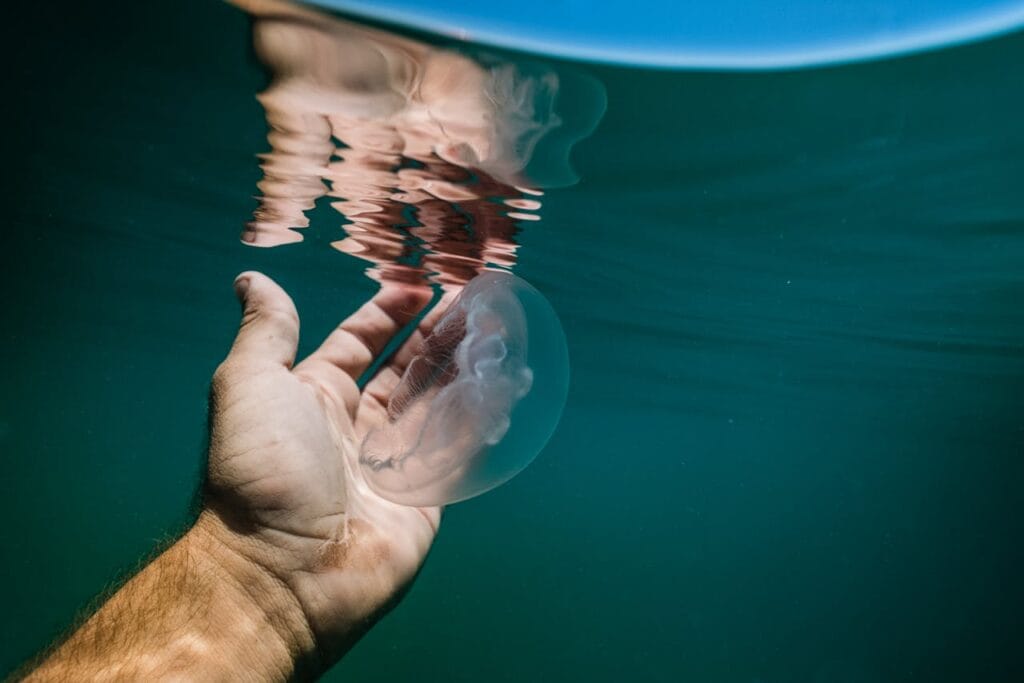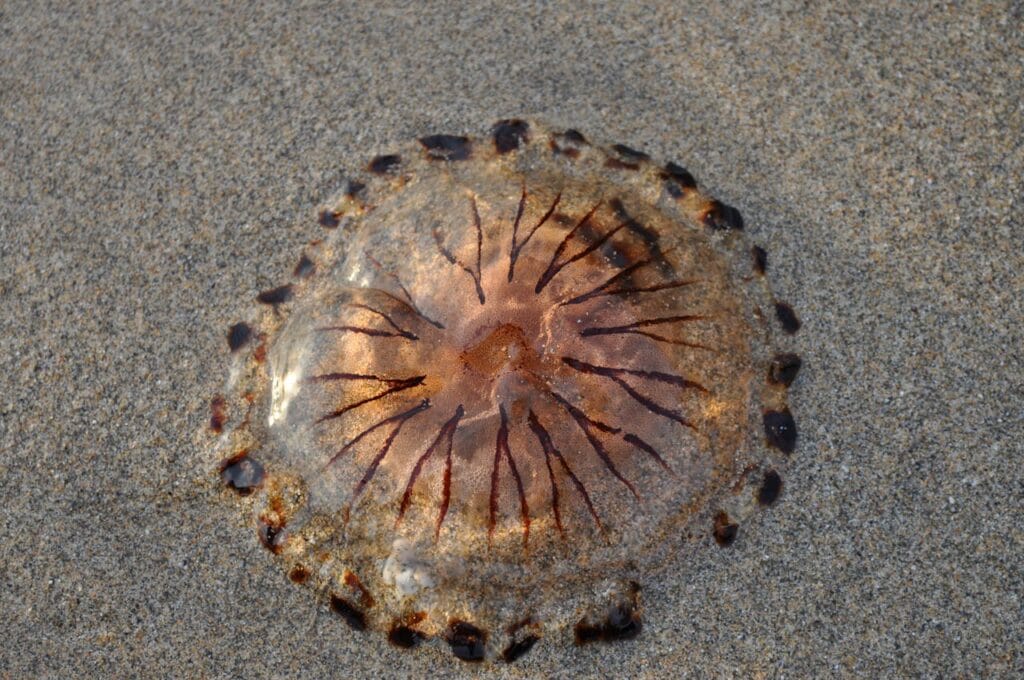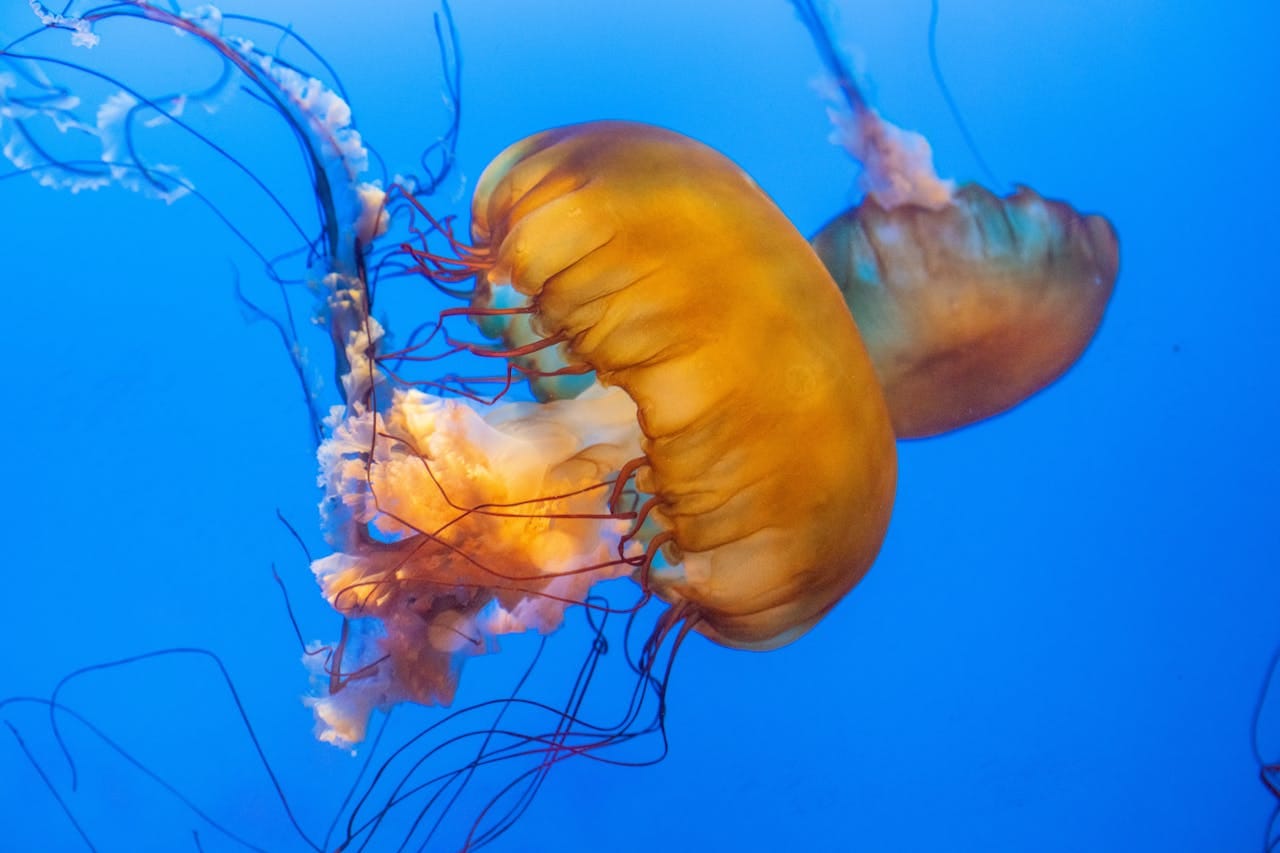There is an opinion that if a person is stung by a jellyfish, he needs to urinate on the burn to relieve the pain. We decided to check whether scientific evidence supports the effectiveness of this method.
The series “Friends", in one of the episodes of which Monica was stung by a jellyfish. Her friend Joey told the girl about a documentary that advised her to urinate on the affected area. Since Monica herself was uncomfortable peeing on her leg, Chandler came to her aid. You can also find similar advice on many tourist sites. websites, forumsdedicated to relaxation at sea, in social networks And blogs.
Jellyfish - invertebrate marine animals of the class Scyphozoa, which are slightly less than 100% water. Although it is customary to talk about jellyfish stings (and this very word will also be used sometimes in this analysis), in fact they do not bite, but sting. On their “skin” there are so-called stinging cells - compartments containing tiny needle-like poisonous stings. Under the influence of the external environment (for example, due to touch or changes in the chemical composition of water), these compartments open, releasing the stings. Moreover, this happens in a fraction of a second, that is, a fleeting accidental touch is enough for the jellyfish to “sting”. Although the venom of some species of these animals is deadly, most jellyfish do not pose a serious threat to humans, and the bite results only in minor skin irritation that resolves within a few days.

When encountering a jellyfish on the skin appear sharp burning or stabbing sensations, which may be accompanied by throbbing pain spreading throughout the affected area of the body. The area where the jellyfish stung may turn red, often leaving traces of red, brown or purple tentacles on it. First thing you need do after a jellyfish sting, is to wash off the remaining parts of the jellyfish’s tentacles from the skin, which may contain unopened stinging cells. In order not to worsen the situation, they must be washed off with sea or salted water, because they can consider fresh water (including bottled water) an irritant and release their stings. The myth that you can relieve pain by urinating on the bite site appears to be true. withdraw just from this recommendation - urine, due to the content of ammonia and urea, has a more alkaline pH than fresh water. However, experts note that these substances in urine are highly diluted and the difference is not so significant, which means that pouring it over the bite site will most likely trigger the release of poisonous stings from cells that have not yet opened.
After washing need to examine the bite site and, if visible parts of the tentacles remain on the skin, carefully remove them with thin tweezers or gloved hands. Then, to relieve pain, it is recommended to soak the affected area in hot (about 40–45 ° C) water for 20–45 minutes. Urine is also poorly suited for this procedure, since its temperature at the time of urination is approximately equal to body temperature (that is, about 37 ° C); when watering the affected area for 20 minutes, the liquid will completely cool down to ambient temperature. Some specialists also advise Before hot water baths, wipe the burn area with vinegar, noting that this recommendation is not universal. For example, in the case of the Portuguese man-of-war, which, strictly speaking, is not a jellyfish, but looks very similar, vinegar will only make the situation worse.
“Verified” could not be found in the specialized literature and on reputable specialized sites advice to use urine as first aid methods or treatment for jellyfish stings. Reviews of scientific papers on this topic published by Belgian scientists in 2016 and American in 2023, have not confirmed that urine has any positive effect on damaged areas of the skin. UK National Health Service (NHS) directly calls refrain from using urine in this context.

As regards the subsequent healing of the affected area, there is no reason to expect that urine will in any way speed it up. "Verified" already wrote, that it does not help heal thermal burns and other wounds, and it is not worth applying it to damaged skin also because urine may contain pathogenic bacteria, which will only worsen the situation.
Specialists notethat the best cure for a jellyfish sting is time, since most injuries disappear on their own within a few days and leave no traces behind. When encountering deadly species (e.g. box jellyfish), on the contrary, you need to see a doctor as soon as possible, because their venom can lead to paralysis and cardiac arrest within a few minutes after the bite. Also go to a medical facility necessaryif the bite is close to the eyes, if a large area of skin is affected, or if the person has a severe allergic reaction.
Thus, there is no scientific evidence that urinating on the site of a jellyfish sting helps relieve pain or speed healing. On the contrary, the composition of urine and the possible presence of bacteria in it can worsen the situation, increase pain and inflammation. No reputable medical organization recommends urine as a means to relieve symptoms or heal jellyfish stings.
Cover photo: pexels.com
Read on the topic:
- National Ocean Service. What is the most venomous marine animal?
- Is it true that burns can be cured with oil, urine or honey?
- Is it true that sunscreens are destroying coral reefs?
If you find a spelling or grammatical error, please let us know by highlighting the error text and clicking Ctrl+Enter.






